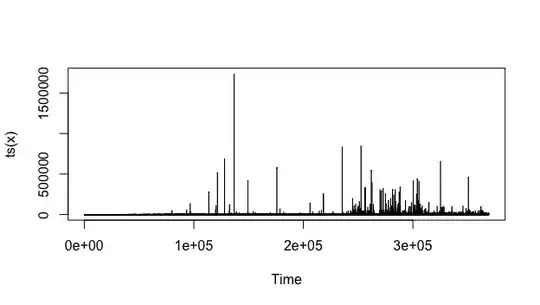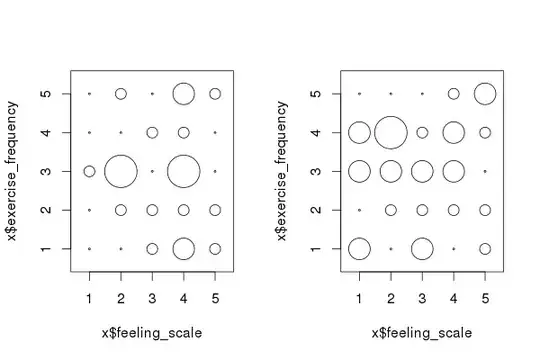I have the following irregularly spaced time series.

The related autocorrelogram is:

and I run the following tests:
> adf.test(x)
Augmented Dickey-Fuller Test
data: x
Dickey-Fuller = -70, Lag order = 70, p-value = 0.01
alternative hypothesis: stationary
Warning message:
In adf.test(x) : p-value smaller than printed p-value
> kpss.test(x)
KPSS Test for Level Stationarity
data: x
KPSS Level = 30, Truncation lag parameter = 100, p-value = 0.01
Warning message:
In kpss.test(x) : p-value smaller than printed p-value
> Box.test(x, type = "Ljung-Box")
Box-Ljung test
data: x
X-squared = 20000, df = 1, p-value <2e-16
How can this time series be stationary? I suppose problems arise because my time series is irregularly spaced. In this case, there exist methods to assess stationarity with irregularly spaced time series?